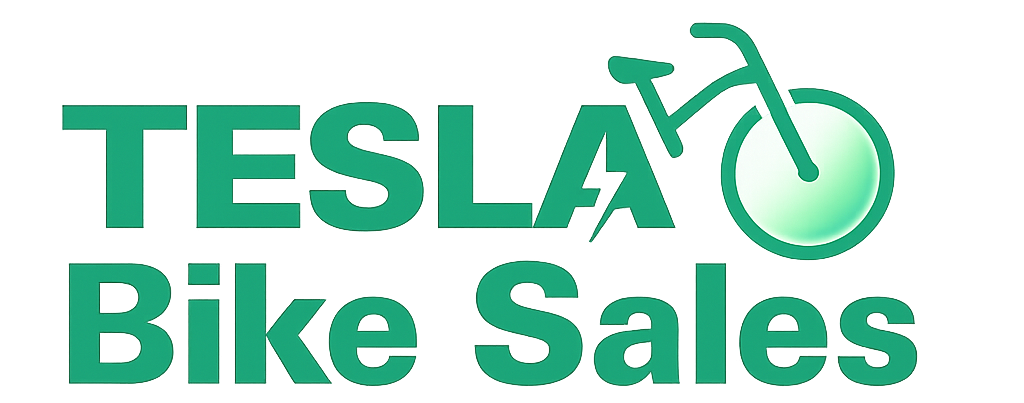Best Electric Bikes of 2025: Tested & Reviewed by Real Riders
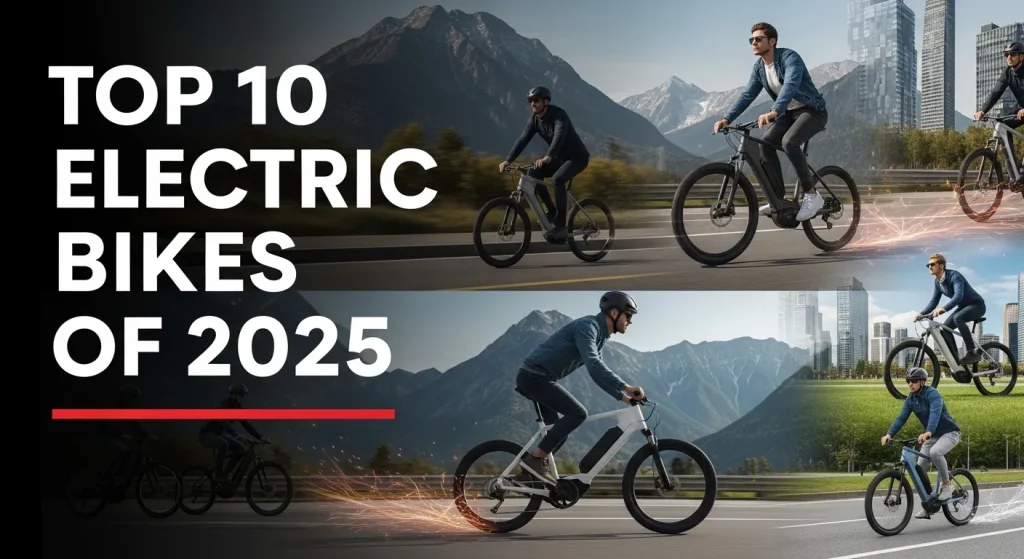
Electric bikes have evolved from specialty gadgets into must-have transportation options. The best e-bikes are now accessible to more people with prices ranging from under $1,000 to well over $10,000. Our team has tested more than 130 e-bikes from almost every major manufacturer in the last 12 months. This gives us a unique perspective on what makes an e-bike truly stand out. The Aventon’s Level 3 earned our Best Overall Electric Bike title after rigorous testing. The Lectric XP 4 proved itself as the Best Folding Electric Bike.
Some models push the boundaries of what’s possible – the Fiido Titan can go up to 250 miles on a single charge thanks to its triple-battery setup. The sweet spot for great e-bikes falls between $1,500 and $3,500. These bikes are a great way to get quality features without breaking the bank. This piece breaks down our top 10 electric bikes of 2025. We cover everything from daily commuters to specialized long-range models. Our ground testing will guide you to the right choice, whether you’re buying your first e-bike or upgrading to something more advanced.
Top 10 Electric Bikes of 2025
The electric bike market has transformed with amazing new ideas in 2025. Our team rode countless miles on different terrains to find the best performers worth your money this year.
1. Best Overall: Aventon Level 3
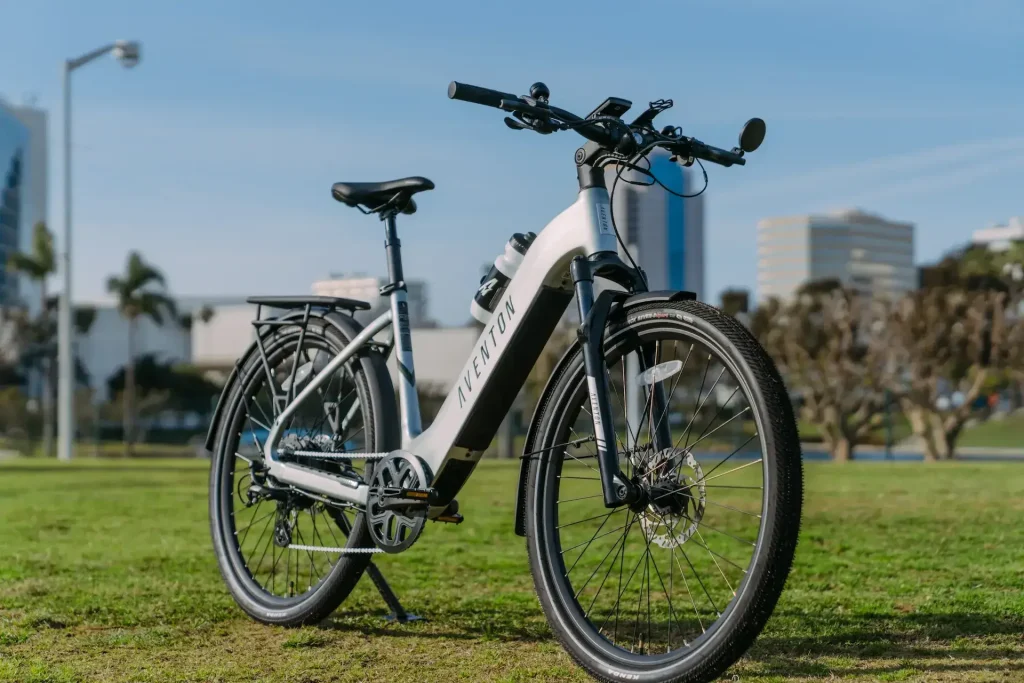
Pros
Cons
Aventon Level 3 raises the bar with its gravity-cast frame that gives better stiffness and responsiveness. This e-bike stands out with its complete security package that includes 4G connectivity, GPS tracking, geofencing capabilities, and an electronic rear wheel immobilizer. The bike’s torque sensor creates a natural riding experience by responding to pedal pressure. Our ground testing showed a range of 75 miles on low pedal assist. Magura hydraulic brakes provide excellent stopping power, making the Level 3 perfect for daily commuters.
2. Best Folding E-Bike: Lectric XP 4
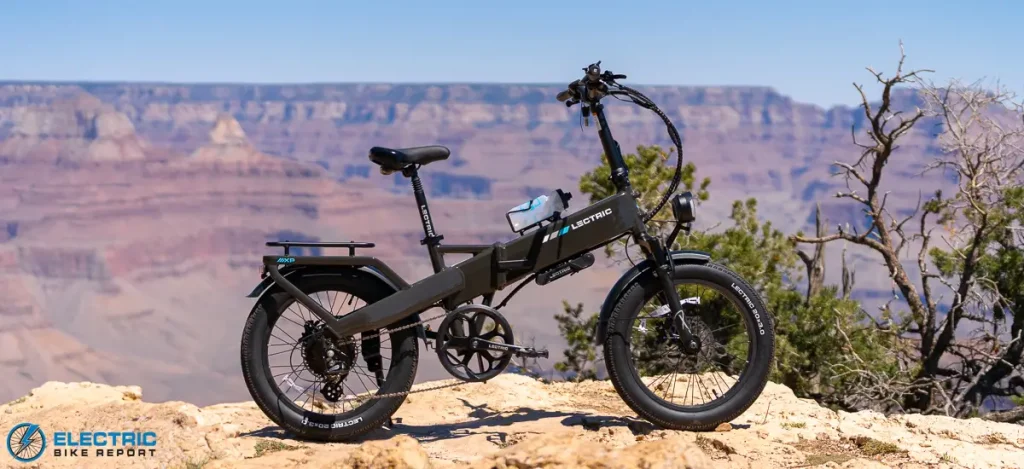
Pros
Cons
Lectric XP 4 shows what a folding electric bike can do. This compact powerhouse comes in 500W and 750W options with a new frame design and proprietary torque sensor that makes pedaling feel more natural. The 750W model features a better 17.5Ah battery that runs up to 85 miles on one charge. A full-color TFT display and better hydraulic brakes make riding more enjoyable. The quick-folding design makes it easy to store and move around. This compact bike reaches speeds up to 28 mph.
3. Best Fat Tire E-Bike: Aventon Aventure 3
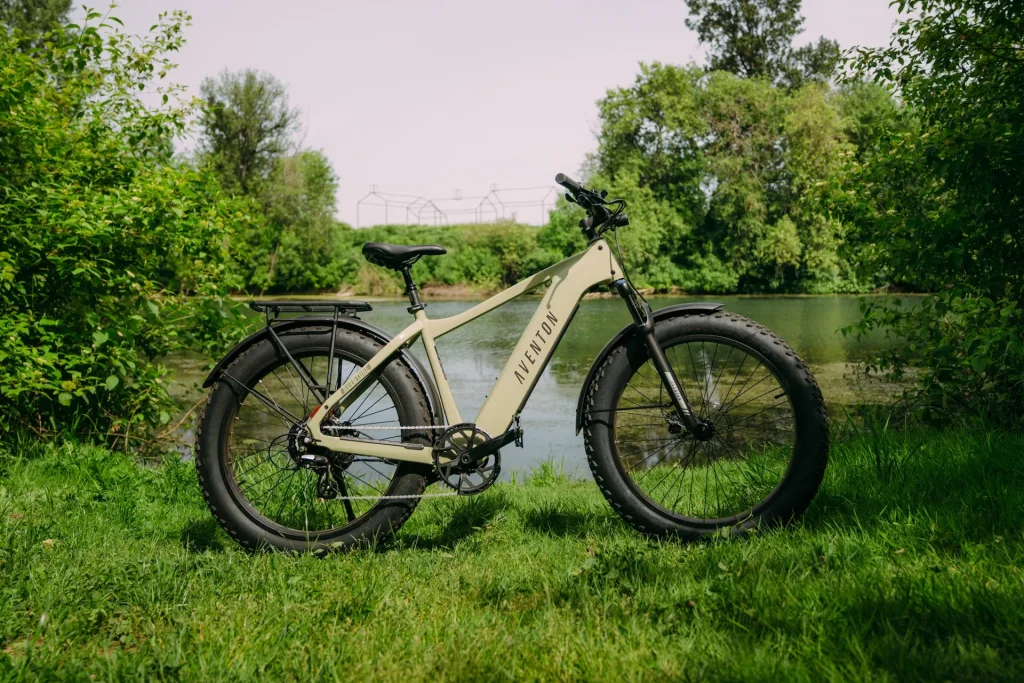
Pros
Cons
For adventure seekers, the Aventon Aventure 3 not only excels in handling diverse terrains with its 4-inch-wide tires and powerful 750W motor, but also ensures you stay hydrated on long rides. Equipped with optimal water bottle mounting points on the frame, this bike makes it easy to attach your water bottle securely. Whether you’re navigating rugged trails or venturing off-road, you can rely on the bike’s advanced design and hydration setup. The 65-mile range and enhanced security features like 4G connectivity and GPS tracking allow you to explore confidently, knowing you have your water within easy reach for every adventure.
4. Best City E-Bike: Ride1Up Roadster V3
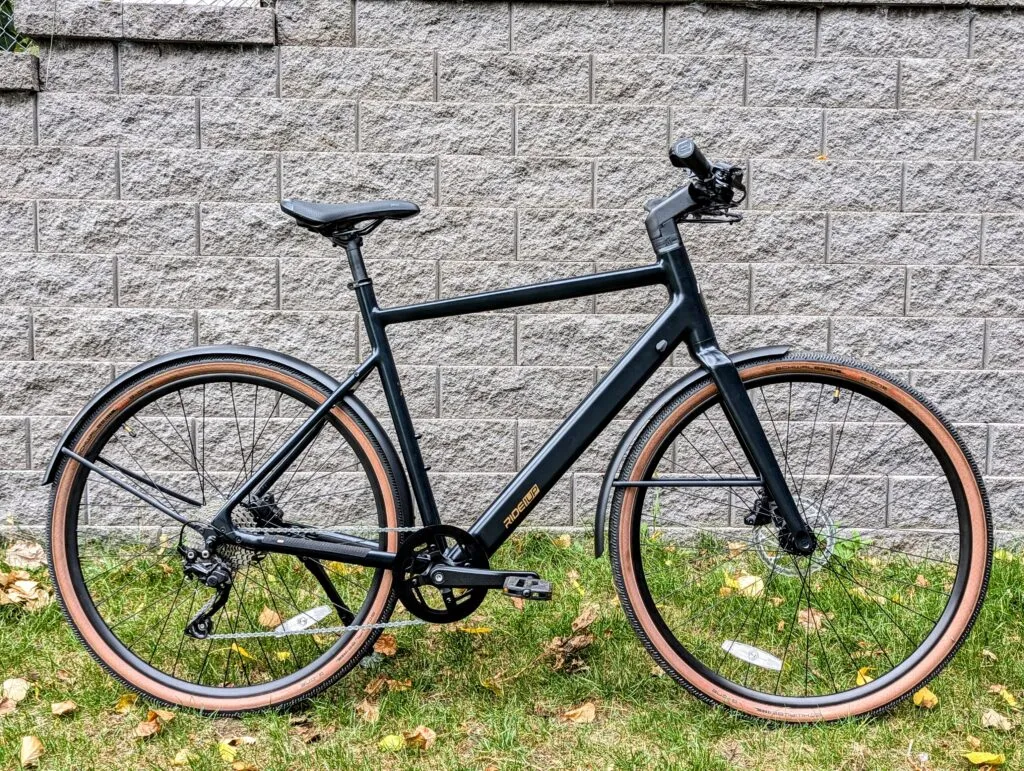
Pros
Cons
Ride1Up Roadster V3 makes the perfect urban companion. This lightweight 44-pound bike packs surprising power in its 500W MIVICE hub motor. The Intui-Drive torque sensor delivers power smoothly and naturally. Riders can choose from three frame sizes with either a 9-speed Microshift or belt drive. The bike’s clean design hides cables and components beautifully – rare at this price point.
5. Best Commuter E-Bike: Velotric Discover 2
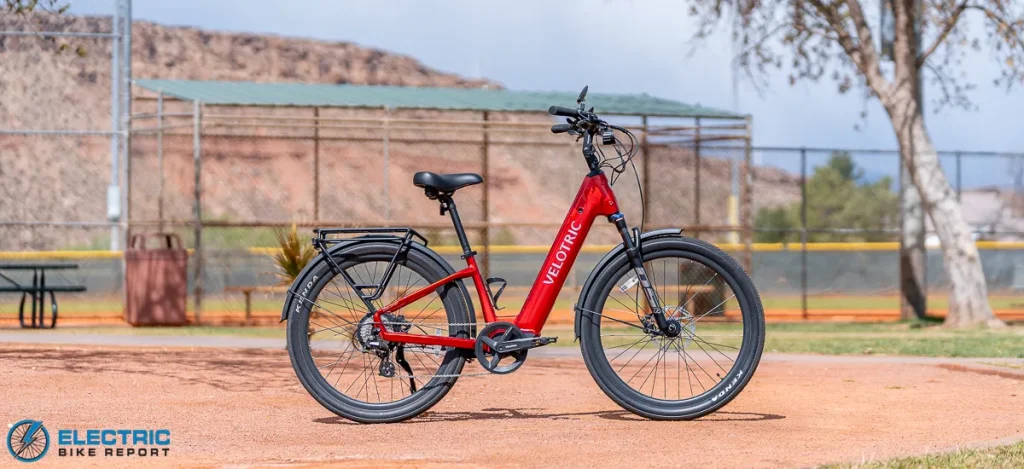
Pros
Cons
Velotric Discover 2 shines as a daily commuter. Our tests showed an amazing 85.6-mile range on one charge. The bike’s app and display let you customize three riding modes, two sensor modes, and 15 pedal assist settings. It supports riders up to 440 pounds and includes safety features like turn signals and brake lights.
6. Best Cargo E-Bike: Lectric XPedition 2.0
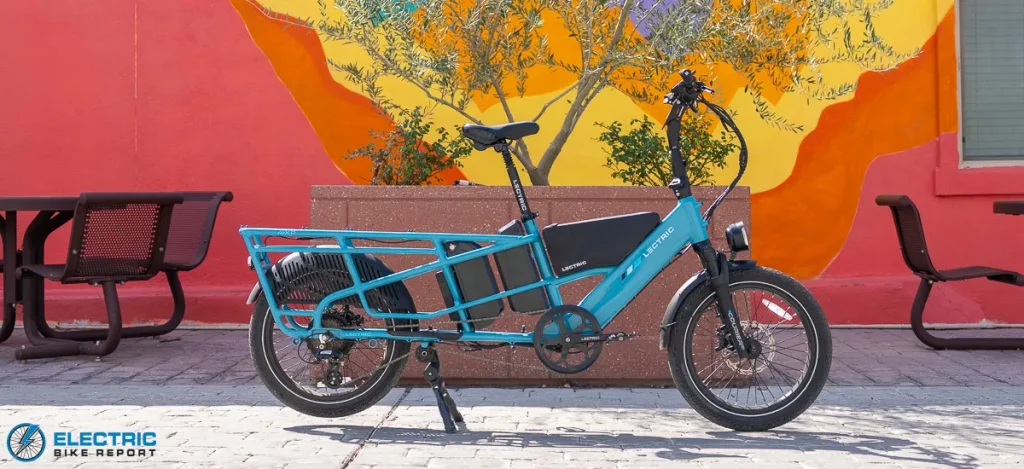
Pros
Cons
Lectric XPedition 2.0 brings great value to cargo bikes. The strong frame carries up to 450 pounds, and its rear rack handles 300 pounds. You can choose dual batteries for longer trips – up to 170 miles with the extended range setup. A torque sensor works with Lectric’s PWR+ programming for smooth power delivery. The dual-leg kickstand keeps the bike steady during loading.
7. Best Budget E-Bike: Ride1Up Portola
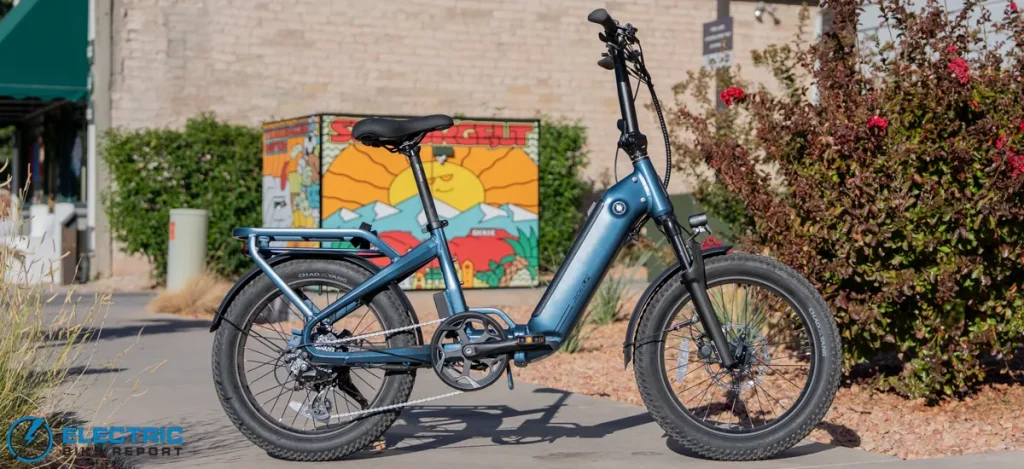
Pros
Cons
Ride1Up Portola offers amazing value at $1,000. This budget-friendly bike includes features usually found on expensive models. It sports an 8-speed Shimano Altus drivetrain with almost 300% gear range, hydraulic disk brakes, and a lively 750W hub motor with 65Nm of torque. The 24-magnet cadence sensor responds better than typical budget bikes. Its folding frame makes storage and transport easy.
8. Best for Seniors: Velotric Nomad 2
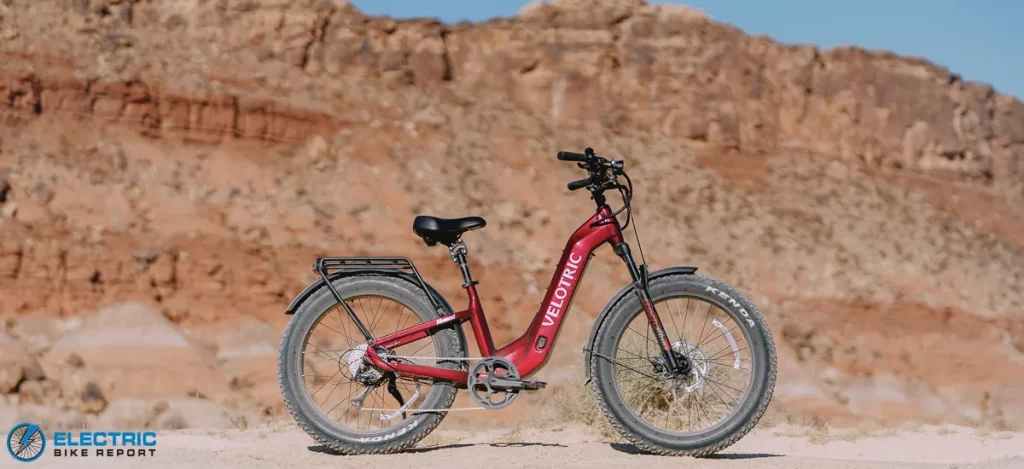
Pros
Cons
Velotric Nomad 2 focuses on easy access and comfort with its low 410mm step-over point. SensorSwap technology lets riders pick between torque or cadence sensing. The ComfortMax design keeps riders upright and relaxed, reducing back and shoulder strain. A 750W motor delivers 90Nm of torque, while the 705.6Wh battery runs up to 65 miles. Fat tires add stability, making this bike great for older riders.
9. Best Mountain E-Bike: Trek Fuel EXe 9.9
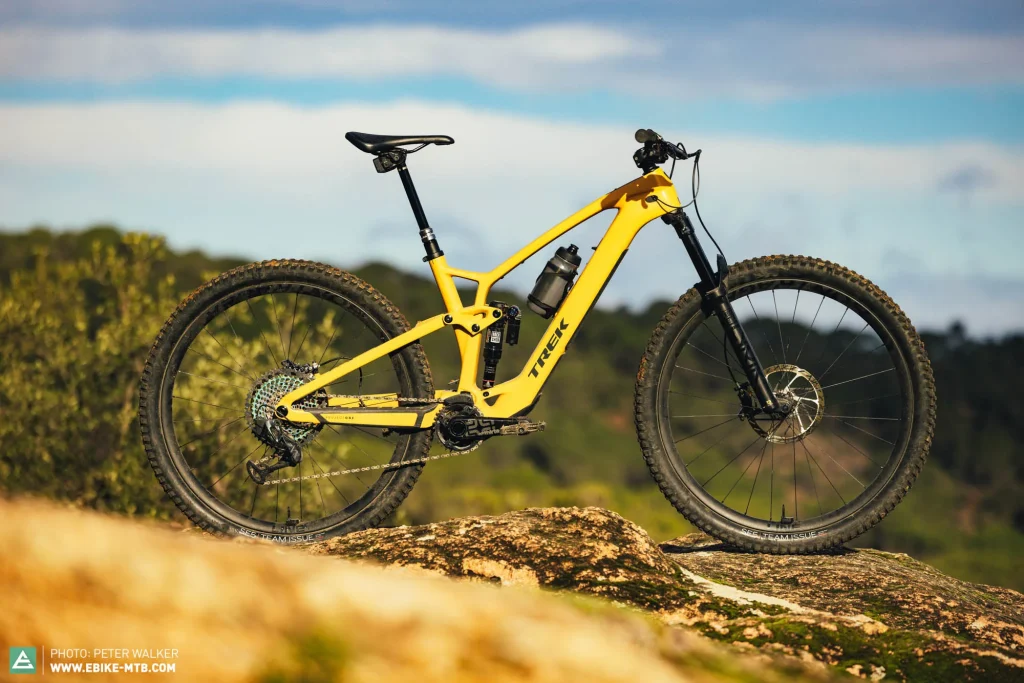
Pros
Cons
Trek Fuel EXe 9.9 redefines what a mountain e-bike should feel like. Its lightweight carbon frame and TQ-HPR50 mid-drive motor deliver seamless power that feels almost invisible while climbing or cruising downhill. The 360Wh integrated battery gives you up to 60 miles of trail range, and a discreet 2″ OLED display keeps your focus on the ride. We loved how quiet the motor runs, making it ideal for riders who want a natural mountain biking experience with electric assist. The RockShox suspension and precise handling make every off-road ride smooth and controlled.
10. Best Long-Range E-Bike: Himiway Zebra
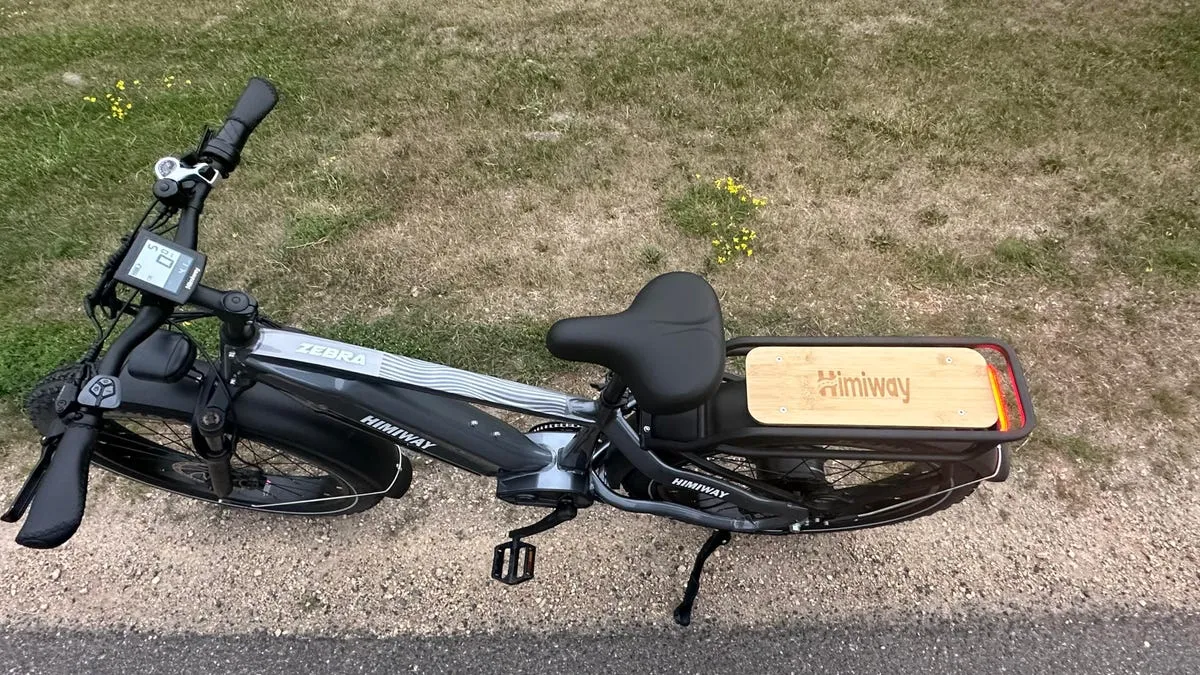
Pros
Cons
Himiway Zebra stands out for its endurance. Built with a 960Wh Samsung/LG battery, this e-bike easily covers up to 80 miles per charge. The 750W geared hub motor delivers solid acceleration even on steep hills. Its all-terrain 26″ x 4″ fat tires handle dirt, gravel, and pavement effortlessly. The hydraulic brakes, adjustable front fork, and comfortable saddle make long-distance rides easy and stable. The Zebra’s robust frame supports up to 400 pounds, making it perfect for riders who want power, comfort, and serious mileage without constant recharging. You can buy all these bikes at Tesla Bike Sales in reasonable price and great quality.
What Makes These the Best Rated Electric Bikes
The best electric bikes stand out from average ones through careful testing and review. Our team’s recommendations come from detailed assessments of multiple performance aspects.
Real-life Testing By Experienced Riders
Good rankings need hands-on testing. Our team has reviewed more than 130 e-bikes from almost every major brand in the last year. The tests include hill climbing, braking, range checks, and ride-quality reviews at our headquarters.
Our test riders also use these bikes every day. They ride them to work, get groceries, drop kids at school, and run errands around town. Daily use shows how each bike works in real conditions.
Performance on Different Terrains
Great electric bikes work well on any surface. All-terrain e-bikes have wider, knobby tires that grip rough ground better and reliable suspension systems that smooth out bumps.
Strong motors help riders climb hills and tackle tough terrain easily. We test each bike in its intended environment. Fat tire models must work well on sand, snow, and loose ground, while city bikes need to prove themselves on regular streets.
Battery Range and Motor Power
A bike’s battery life determines how useful it is. Today’s e-bikes typically go 20-50 miles per charge. Premium models can reach 100 miles. The Lectric XPedition 2.0 goes up to 170 miles with two batteries. Motor location matters too. Mid-drive motors climb better and use less power, while hub motors cost less and have simpler designs.
Comfort and Ride Quality
Riders need comfort for long-term enjoyment. The seat design, suspension, and riding position make a big difference. The Velotric Discover 2 shows great comfort with its step-thru frame, upright position, and swept-back handlebar.
Good suspension forks and seatposts make rides smoother by reducing road vibrations. Tire pressure plays a vital role too. High pressure makes bumps harsh, while low pressure reduces control.
Build Quality and Durability
The best electric bikes have well-engineered frames and parts that last. The Aventon Level 3 uses a gravity-cast frame that rides better and responds faster.
Quality shows in features like hydraulic brakes for sure stopping, strong kickstands for loaded bikes, and electronics that resist water. Bikes with safety certifications often show better build quality.
How to Choose the Best E-Bike for Your Needs
Choosing your perfect e-bike means knowing what matters most for your needs. Let’s look at the key factors that will help you make a smart choice.
Commuting vs. Leisure vs. Cargo Use
The way you plan to use your e-bike should be your first deciding factor. Daily commuters need bikes with good range (20-40 miles on a 10Ah battery), plus essential features like fenders, lights, and reliable brakes. Most commuter e-bikes come with 500W to 750W motors that pack enough punch without going overboard.
Leisure riders often go for cruiser-style e-bikes that offer an upright position and comfortable seats. These bikes put comfort ahead of speed or carrying capacity. Cargo e-bikes work great as car replacements with tough frames that can handle up to 450 pounds. If you need to carry kids, groceries, or work gear, look for bikes with built-in racks, strong kickstands, and maybe even dual batteries for longer trips.
Motor Type: Hub vs. Mid-Drive
Hub motors sit inside wheel hubs and are simple, need less maintenance, and cost less. The downside? They don’t feel as natural to ride and struggle more on hills. Mid-drive motors near the pedals push power straight to the chain. You get better balance, stronger climbing power, and a more natural feel. They cost more and are more complex, but mid-drives really shine on hilly routes by using the bike’s gears effectively.
Battery Capacity and Range
Your battery’s capacity in watt-hours (Wh) tells you how far you can ride. The math is simple: Wh = Voltage (V) × Amp-Hours (Ah). Most e-bikes come with 300-700Wh batteries, and bigger batteries mean longer rides. You can expect about 1 mile for every 20Wh of battery. A 500Wh battery usually gives you 20-50 miles per charge based on how you ride. Things like your weight, the terrain, weather, power assist level, and tire pressure all play a part.
Frame Style and Rider Height
E-bikes come in high-step (traditional), mid-step (hybrid), and step-through styles. Step-through frames are great for riders who don’t want to swing their leg too high. The right frame size makes all the difference in comfort and control. You should have at least 1 inch between you and the top tube when standing over the bike. Most brands have size guides that work for riders from 4’11” to 6’4″.
Sensor types: torque vs. cadence
The sensor technology that controls your motor’s help is worth thinking about. Torque sensors feel your pedaling force and adjust power to match, which feels more natural and saves battery life. These sensors are great at matching your effort level, especially on varied terrain.
Cadence sensors work differently – they check how fast you’re pedaling rather than how hard. They’re cheaper and simpler but give the same power no matter your effort, which can drain the battery faster. Casual riders on flat ground might be happy with cadence sensors, while serious cyclists and hill climbers usually prefer torque systems.
Understanding E-Bike Classes and Legal Limits
The standardized e-bike classification system, now adopted by more than 40 states, helps riders understand where they can legally ride their bikes. These differences determine the rules for riding your e-bike on various terrains.
Class 1: Pedal assist up to 20 mph
Class 1 e-bikes work only when you pedal, and the motor stops helping once you hit 20 mph. These bikes don’t have throttles but use sensors that detect your pedaling motion to activate the motor. The experience feels like riding with a constant tailwind at your back. Class 1 e-bikes have the most access rights and you can ride them anywhere regular bicycles go—this includes bike paths, trails, and greenways.
Class 2: Throttle assist up to 20 mph
Class 2 e-bikes stand out because they have throttles that work without pedaling. They function like a small moped but won’t go faster than 20 mph. Most Class 2 bikes let you choose between throttle and pedal-assist modes. So riders can either actively pedal or use the throttle when they’re tired or facing steep hills.
Class 3: Pedal assist up to 28 mph
Class 3 models are the fastest legal e-bikes, supporting speeds up to 28 mph with pedal assist. These bikes must have speedometers and come with extra rules. Riders need to be 16 or older, and everyone must wear helmets. Many areas don’t allow Class 3 e-bikes on trails, greenways, and park paths.
Why class matters for road legality
Your e-bike’s class is a vital factor that determines where you can legally ride. Note that going faster than 28 mph with motor assistance turns your e-bike into a motorcycle. This means you’ll need registration, insurance, and proper licensing. Local rules often take precedence over state laws, so check your city’s specific regulations before hitting the road.
Where to Buy the Best Electric Bikes in 2025
The market for electric bikes has grown rapidly, and buyers now have many ways to find their perfect ride.
Direct-to-consumer brands
D2C brands like Rad Power Bikes, Aventon, and Velotric deliver right to your door at competitive prices. These companies help you save money by cutting out retail markups. You can schedule virtual consultations and test your bike for 14 days to make sure you love it. Companies like Ride1Up take customer support seriously with dedicated US-based teams.
Local bike shops and service support
Specialty e-bike shops give you unmatched benefits through expert guidance and test rides. The New Wheel’s staff takes you on personalized test rides along quiet streets with beautiful views. Regular maintenance is vital—manufacturers suggest simple tune-ups every six months or after riding 750-1,250 miles. On top of that, local shops often have layaway plans if you need budget flexibility.
Online marketplaces and certified resellers
BikeExchange connects you with retailers of all sizes that compete on price. Upway focuses on certified pre-owned bikes at up to 60% off retail prices, and each bike comes reconditioned with a one-year warranty. These platforms check seller credentials carefully to protect buyers.
What to check before buying
Look for UL certifications (UL 2849 for electrical systems and UL 2271 for batteries) that show safety standard compliance. Read the return policies well to avoid surprise restocking fees. Make sure you understand the manufacturer’s warranty terms and how to get service support later.
Conclusion
Electric bikes have changed from novelty items into vital transportation solutions that countless riders now depend on. Our team tested more than 130 models this year and discovered outstanding options at every price point. The Aventon Level 3 stands out as our top recommendation because of its exceptional balance of performance, security features, and ride quality. Specialized models like the Lectric XP 4 and Aventon Aventure 3 shine brightly in their specific categories.
Your ideal e-bike choice should start with your main riding needs. Commuters need good range and safety features. Weekend adventurers might value comfort and off-road capabilities more. The motor type, hub or mid-drive, affects your riding experience greatly. Mid-drives climb hills better but cost more. Battery capacity determines range directly, though terrain and riding style are vital factors too.
E-bike classifications make a big difference in your purchase decision. Class 1 bikes give pedal assist up to 20 mph with the widest trail access. Class 3 models reach 28 mph but have more restrictions. These differences determine not just performance but your legal riding areas too.
The rise of e-bikes keeps gaining momentum. Prices become more available and technology gets more refined yearly. You can buy from direct-to-consumer brands, local bike shops, or certified resellers. Today’s market gives unique quality and value at every price point. Your perfect e-bike is out there—one that fits your specific needs, riding style, and budget while giving you the freedom and joy that only electric-assisted cycling delivers.
